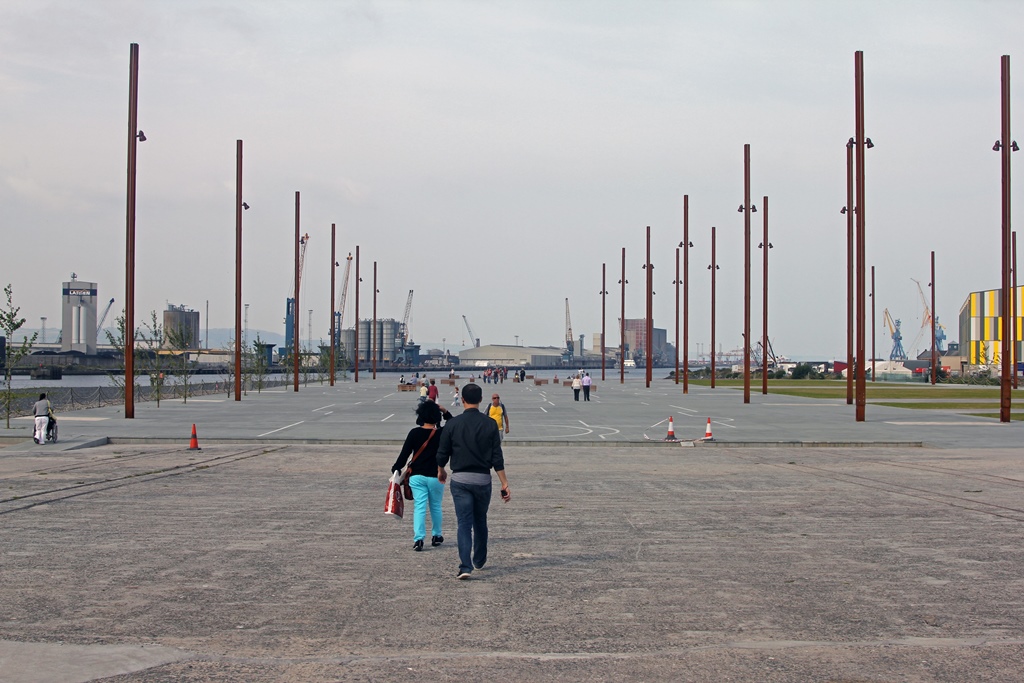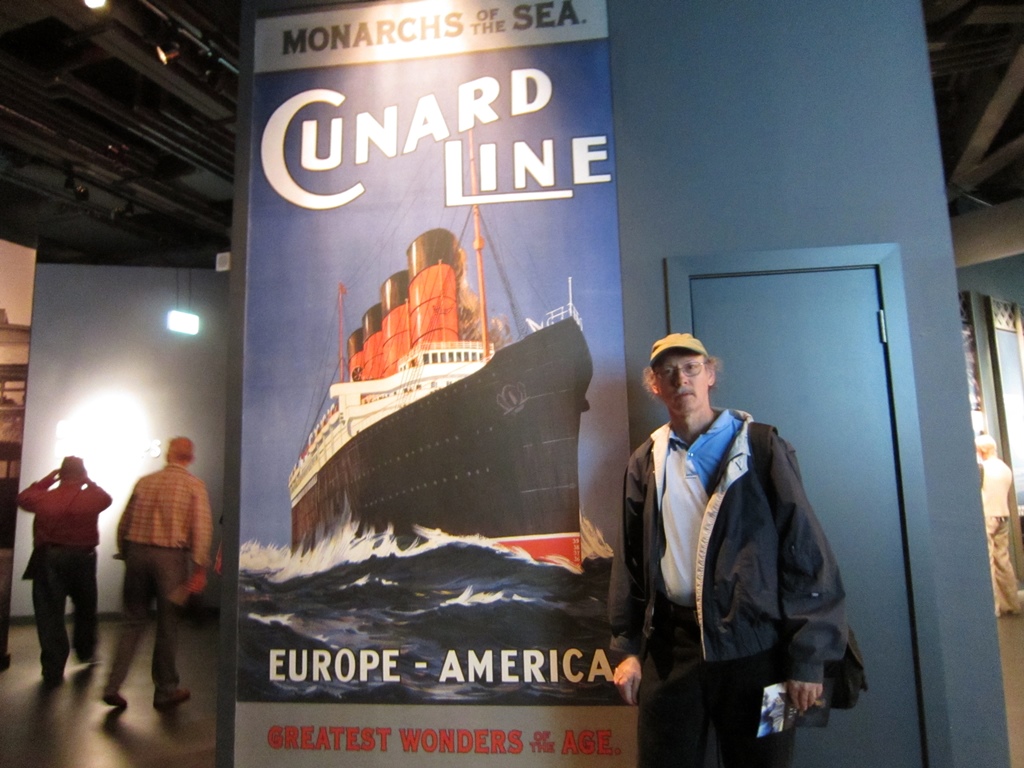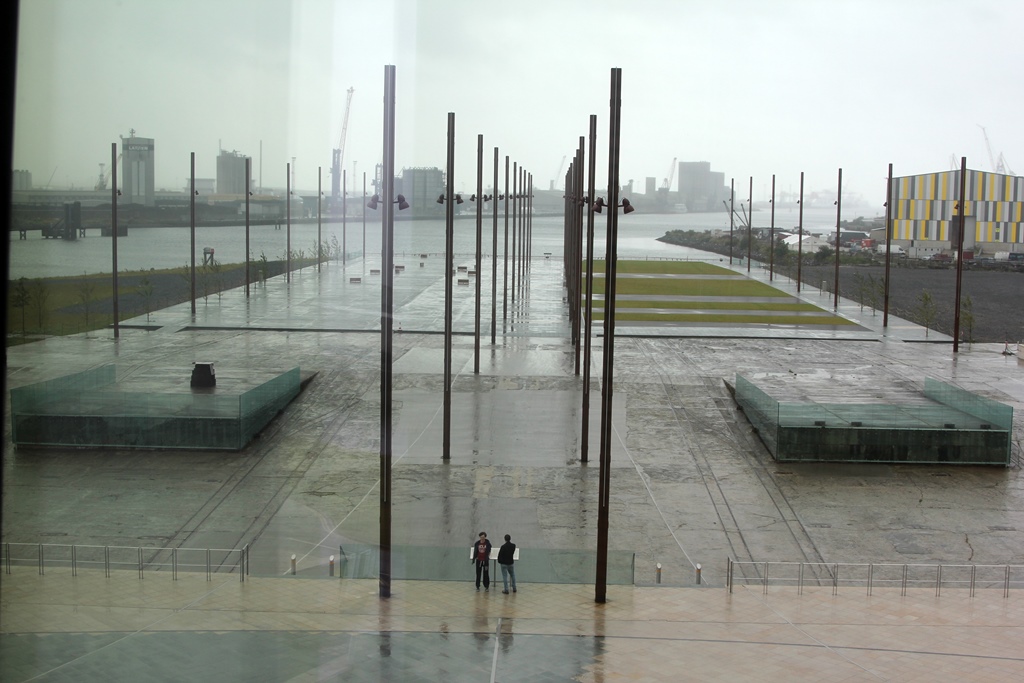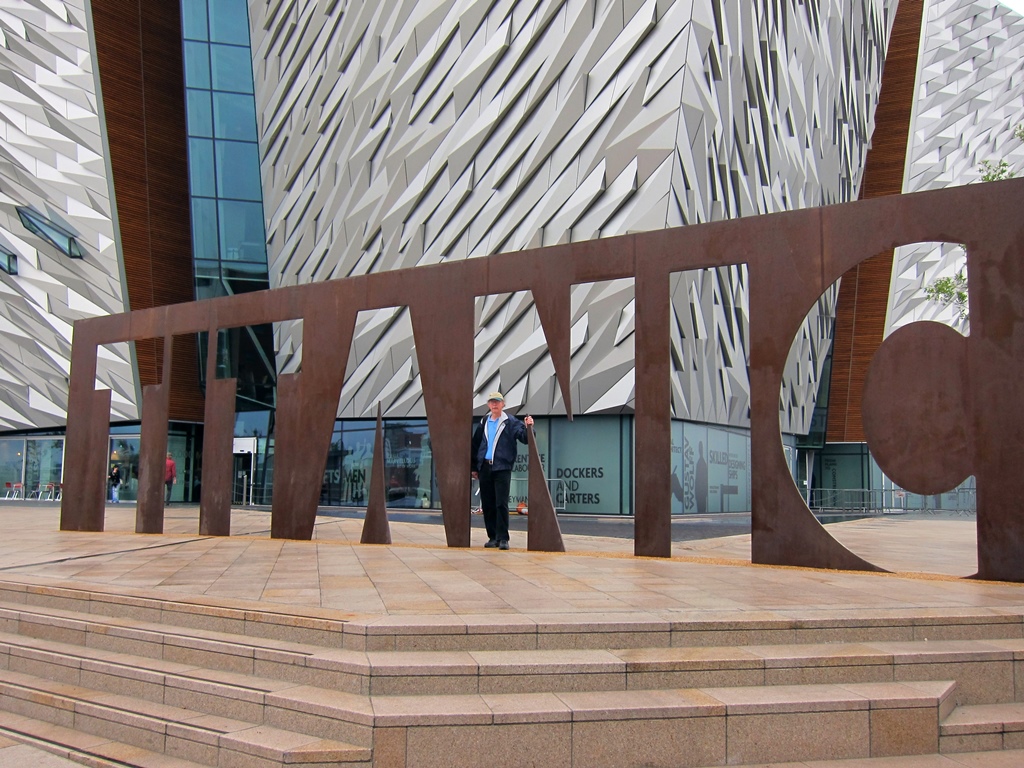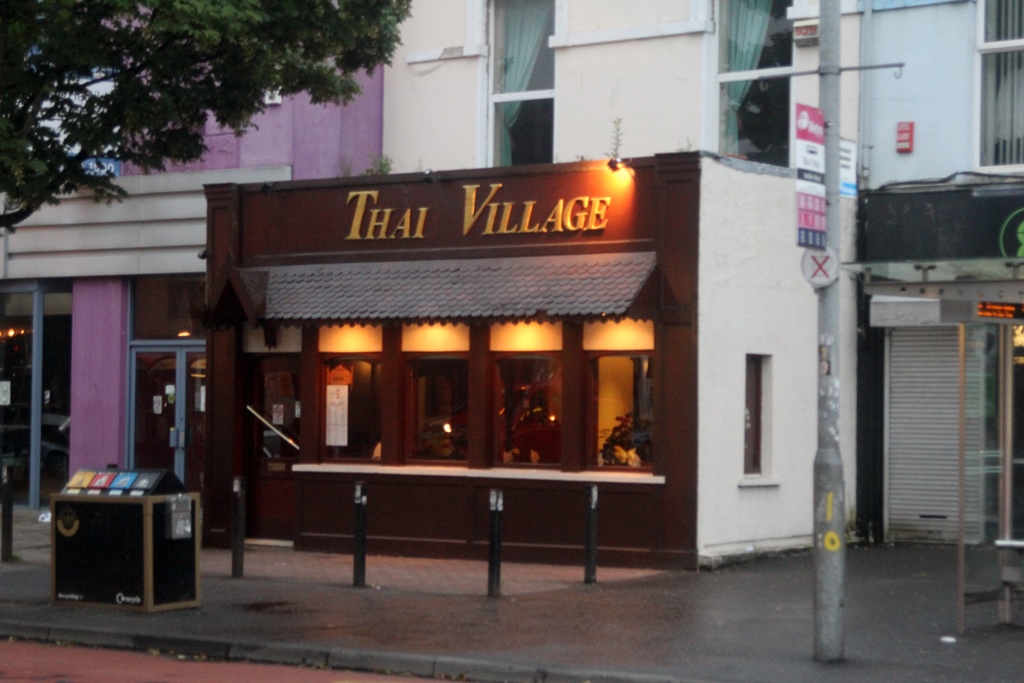Titanic Belfast is a museum
devoted to the history of the famous ocean liner RMS Titanic.
(For those of you who have lived in a cave since birth, the Titanic was an
882-foot ocean liner which struck an iceberg in the North Atlantic on April 14,
1912, during its maiden voyage, and sank in 12,000 feet of water a few hours later,
taking more than 1500 passengers and crew with it. This is one of the worst
peacetime nautical disasters in history. If you really don't know anything about
it, you should get out more. There's a movie.)
The museum is situated at the head of the slipway where the Titanic was
built, and opened on March 21, 2012, only a few months before our visit. The
slipway doesn't exist as a slipway anymore, but there is an outline on the ground
showing where the ship took shape. There are actually two such outlines, as the
Titanic was being built next to and at the same time as a slightly older
sister ship called the Olympic - the Titanic is considered to have
been an Olympic-class ocean liner. The Olympic class eventually
grew to include three ships, with the subsequent construction of the HMHS
Britannic. The Britannic's construction was delayed a bit, thanks to
some redesign work done after the Titanic's sinking (the Olympic
was also hastily recalled for some retrofitting), but it entered service in 1915
as a hospital ship during World War I. The Britannic had some bad luck of
its own – within a year of going into service, it apparently struck a mine and
sank in the Aegean Sea in November of 1916. Only 30 people were lost, but the
Britannic ended up being the largest ship sunk during World War I. With
the Aegean being just 400 feet deep at the site of the ship's sinking, the
Britannic's wreck was located and explored in 1975 by oceanographer Jacques
Cousteau. Finding the Titanic was a lot more difficult, but it was located
off Newfoundland in 1985 by a team led by Robert Ballard. The Olympic, by
the way, suffered some mishaps of its own (such as collisions with other vessels),
but managed to survive them, distinguishing itself as a troop carrier in World War
I and as a workhorse Transatlantic passenger liner during non-war years, until it
was retired in 1935 and eventually scrapped.
We found a bus in the city centre that took us to the Titanic Quarter, where
Titanic Belfast is located. It dropped us off on the far side of a block from the
museum, which left us with some distance to walk. Hopefully they've come up with
a closer bus stop since our visit. The museum's exterior is mostly composed of
shiny aluminum shards, covering pointy projections suggesting ships' prows, but
many locals feel the overall effect is more suggestive of an iceberg (neither
interpretation would be inappropriate in this case). Apparently the museum has a
star shape when seen from the air, indicative of the Titanic having been
built for the White Star line.
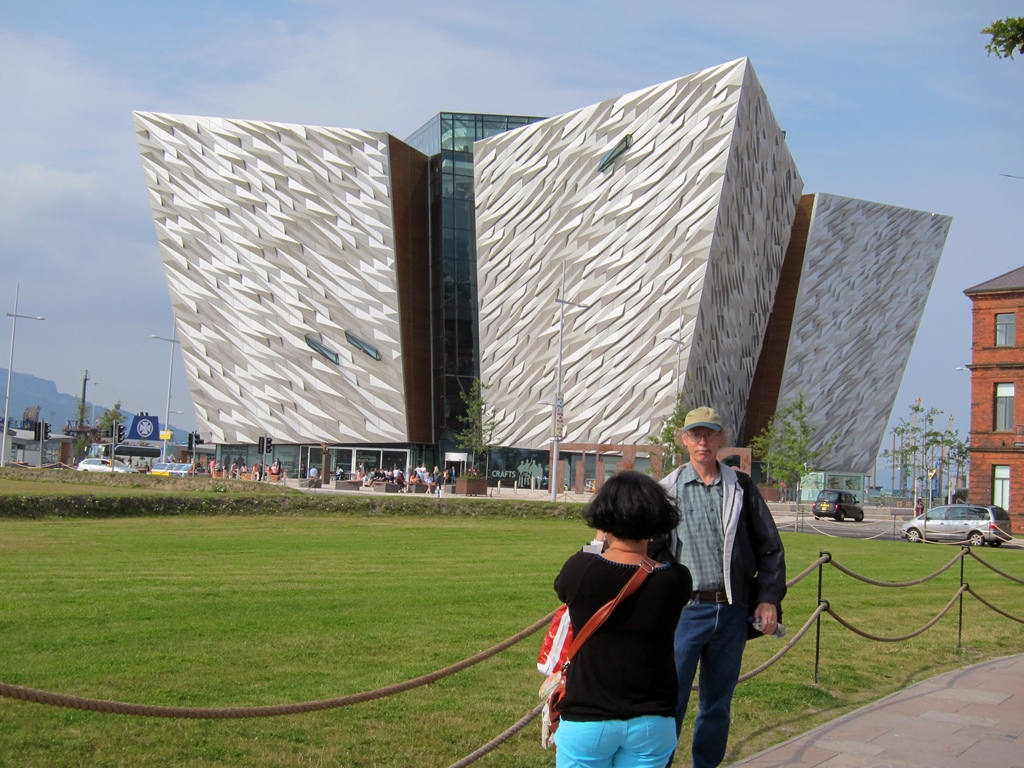
Bob and Nella and Titanic Belfast
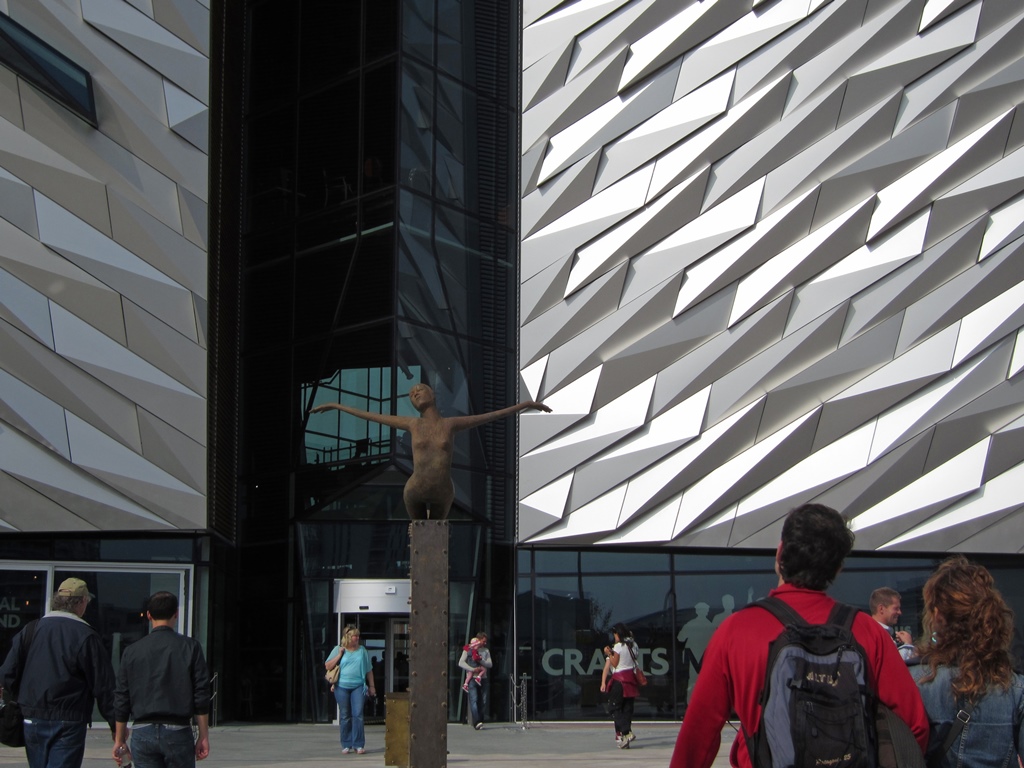
Titanica Sculpture, Rowan Gillespie
We walked around to the other side of the museum, where the slipway area is. It
appeared to be a large, flat concrete area with many girder-like lampposts posted
along the edges. The lampposts apparently represent the positions of the
stanchions of the gigantic gantry used to construct the ship (with a neighboring
set of lampposts for the Olympic's slipway). There are also lines on the
ground representing the eventual positioning of lifeboats and upper-deck
structures.
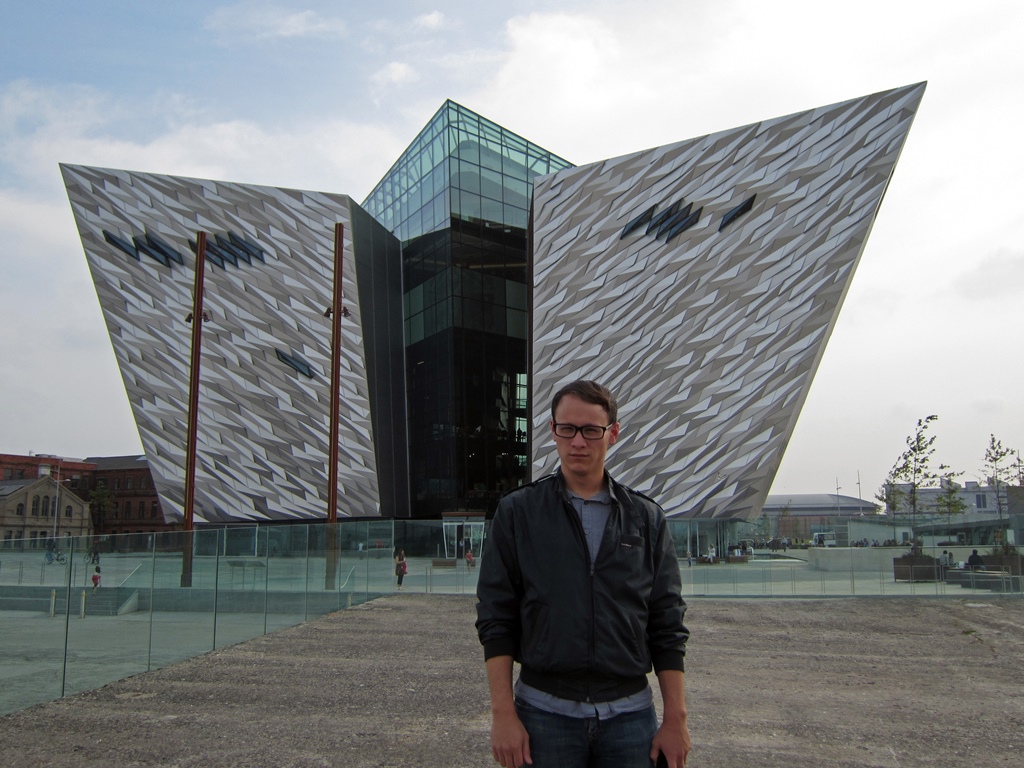
Philip and Titanic Belfast
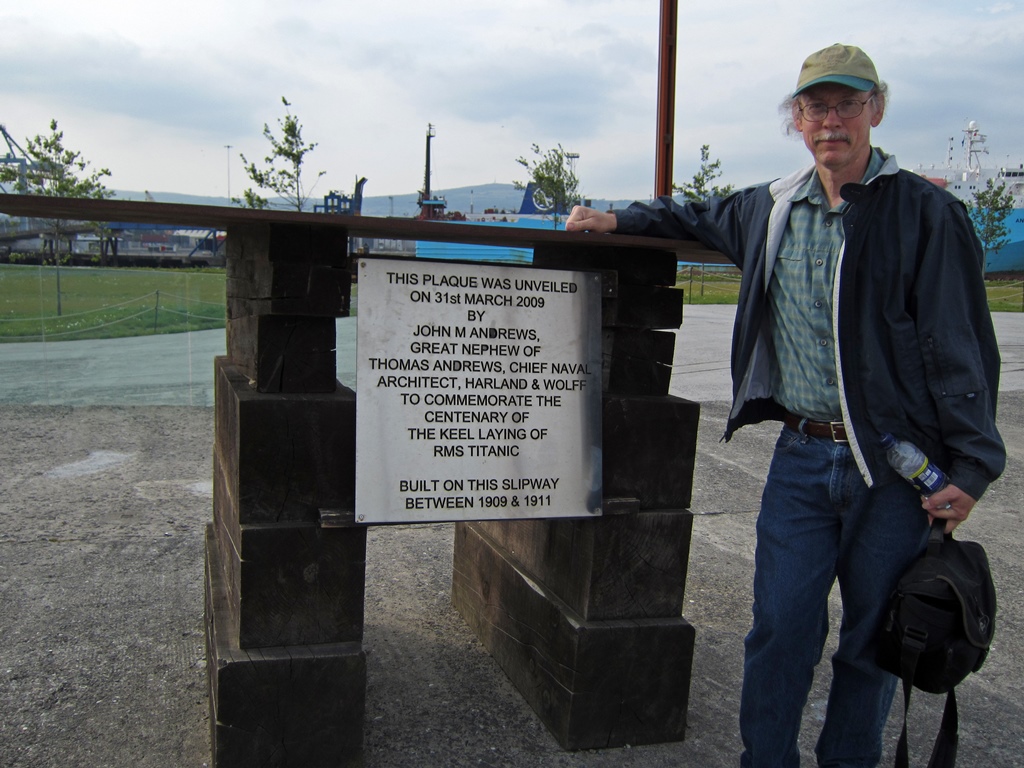
Bob and Slipway Plaque
Nella and Philip and Slipway Area
We followed the slipway down to where it reaches the water and looked around at
the harbour. With the decline of shipbuilding in Belfast, the entire Titanic
Quarter area (renamed from Queen's Island, as it was called at the time of the
Titanic's construction) had fallen into disrepair. The main shipbuilder,
Harland and Wolff (the builders of the Olympic-class ships, among many
other civilian and military craft, since 1861) had lost business to other
countries, and hasn't actually built any ships since 2003. But the company has
now branched out into other areas, including ship repair, bridge building, and
construction of offshore structures (such as drilling rigs, wind turbines and
tidal turbines). An effort is underway to revitalize the area. Titanic
Belfast is part of this effort, as is Titanic Studios, a movie/television studio
(home to Game of Thrones) to be found across from the museum.

Titanic Belfast from Slipway Area
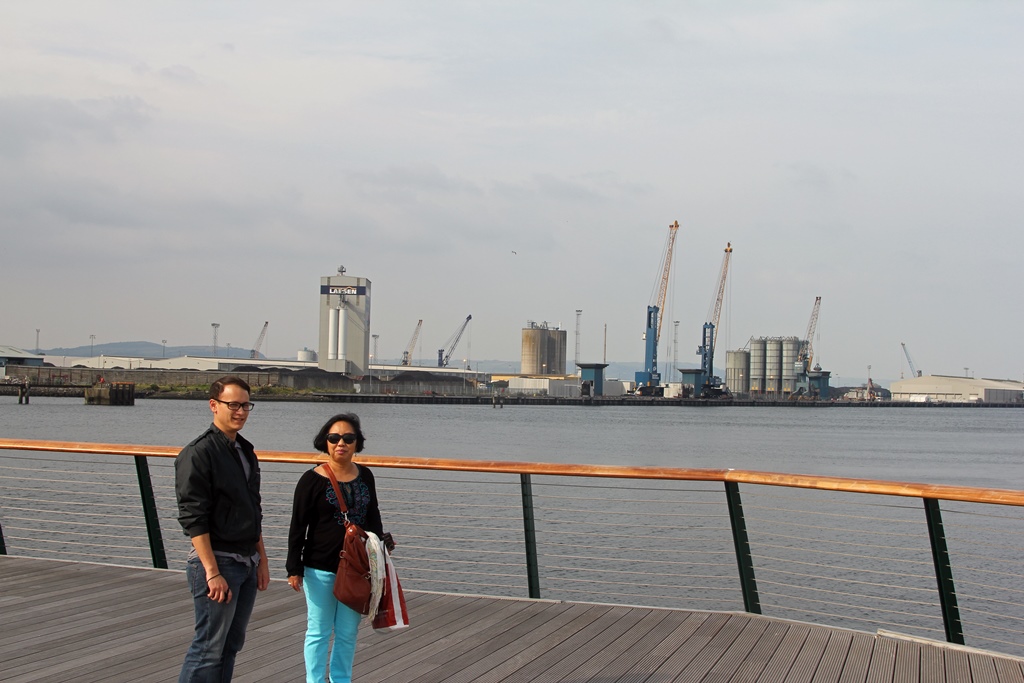
Philip and Nella and Harbour

Harbourfront
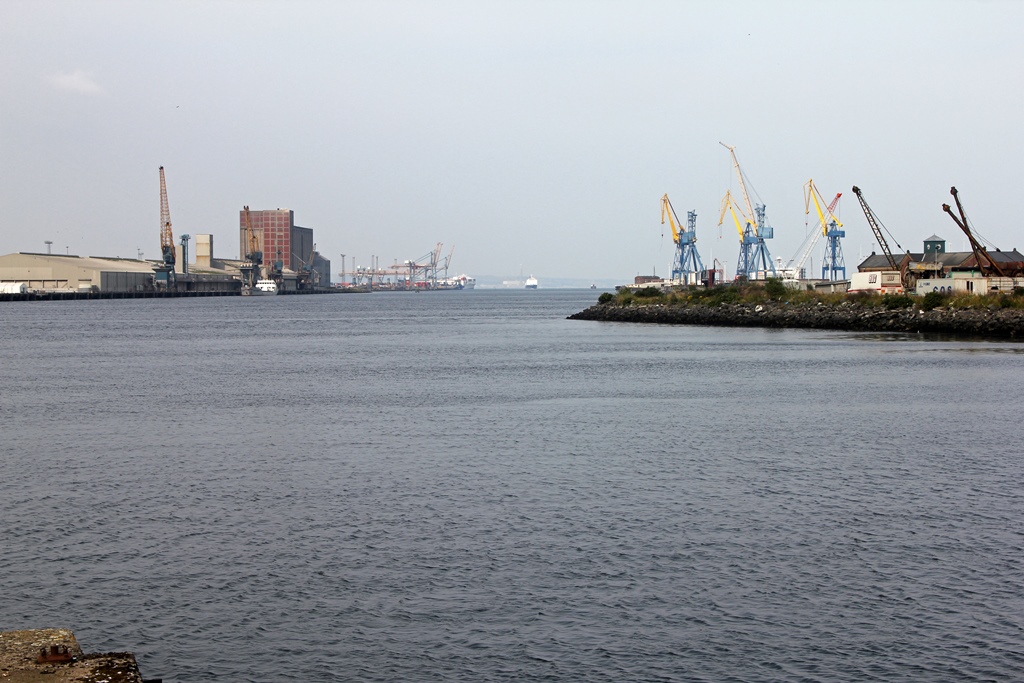
Belfast Harbour
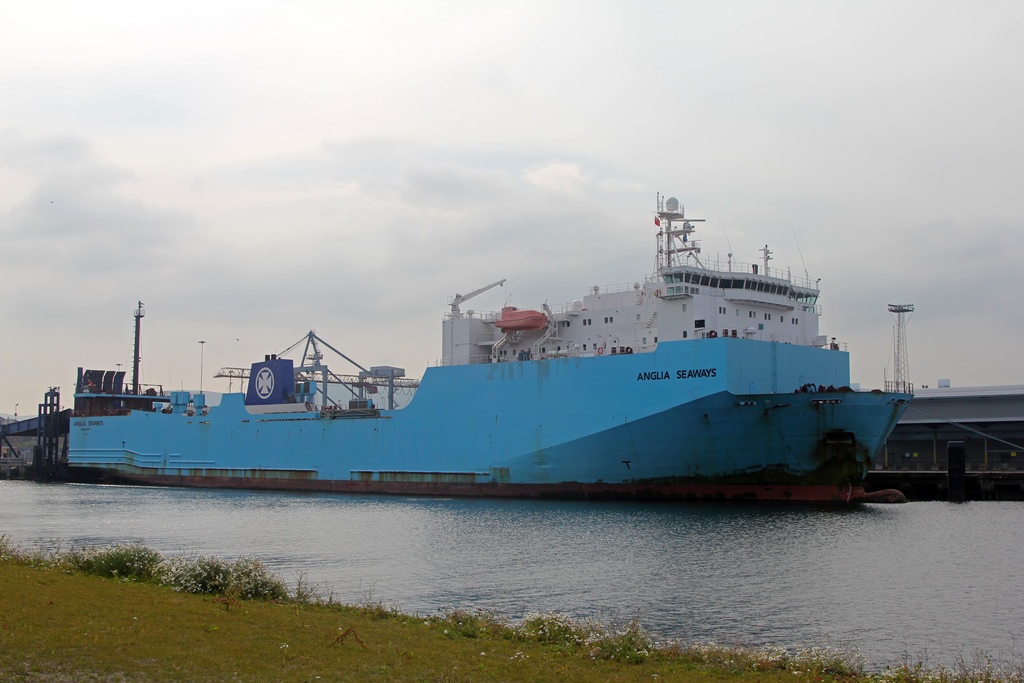
Anglia Seaways Ship
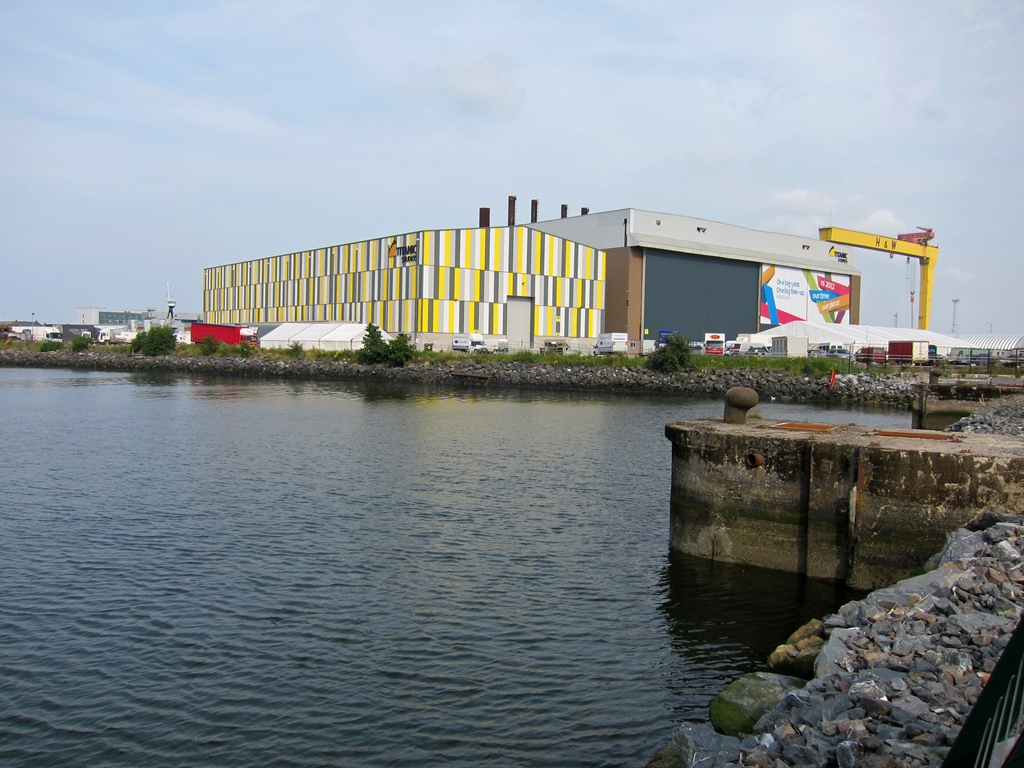
Titanic Studios
Off to the right it was hard two miss two enormous yellow gantry cranes. These
cranes, owned by Harland and Wolff, are among the largest in the world. They have
been named Goliath (315 feet tall) and Samson (348 feet tall). They
were built in 1969 and 1974 for shipbuilding, but are no longer used for this
purpose. They are still used for other heavy-lifting tasks, though. They are
unofficial symbols of the city and have been classified as buildings of
"architectural or historic interest".
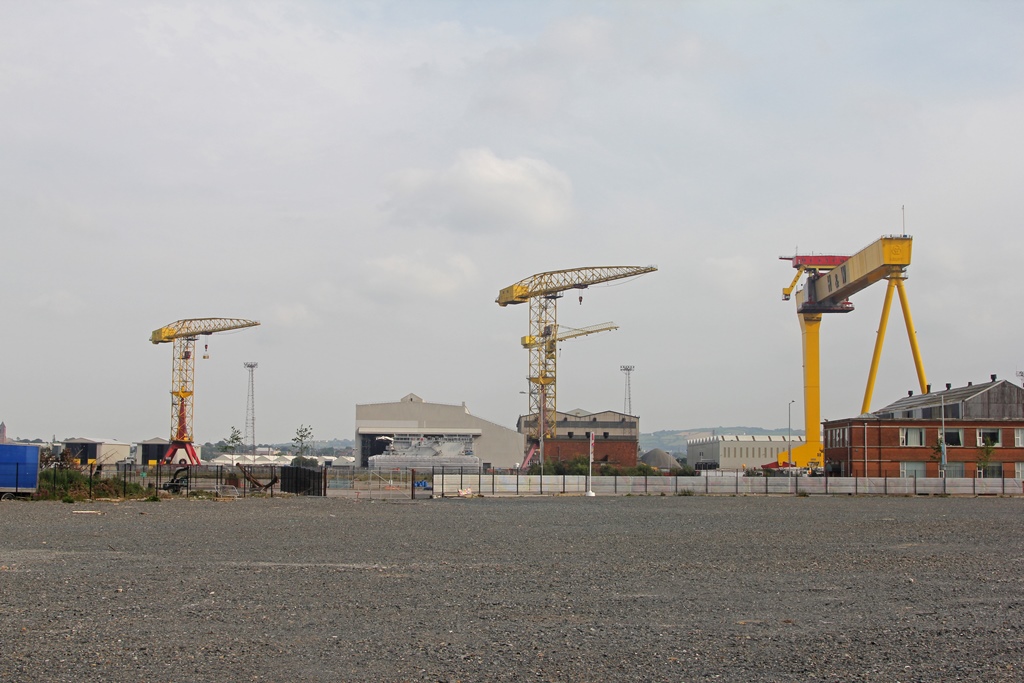
Goliath (right)
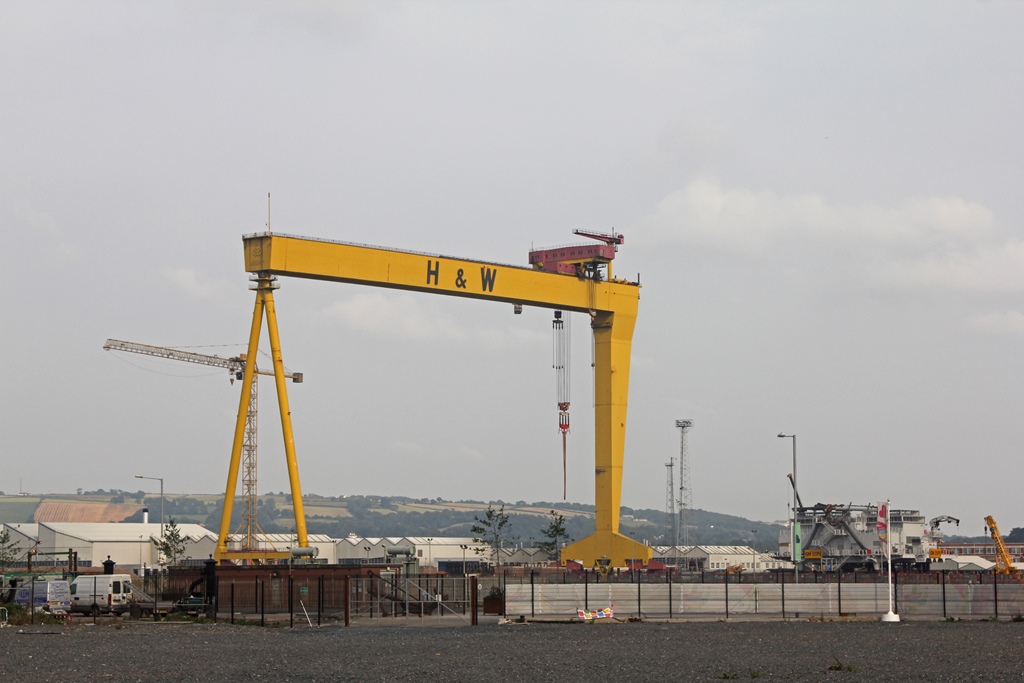
Samson
We walked back up the slipway and attempted to enter the museum, but it was
late in the day by this time, and the museum had already sold the last of its
tickets. We left at this point, to return two days later at an earlier hour
(and in worse weather, as it turned out). In the interest of keeping the
Titanic Belfast stuff together, I'll continue with what happened at that time.
Our intervening adventures will be described in other pages.
Titanic Belfast has a large number of displays of different types. There are
relatively simple posterboard displays, elaborate models and multimedia
displays. There is even a ride through darkened areas that recreate different
types of activities involved in the ship's construction. There are artifacts,
photographs, personal accounts of survivors (and brief biographies of some
non-survivors) and reconstructions. We looked through all of it.
Bob and Cunard Line Poster
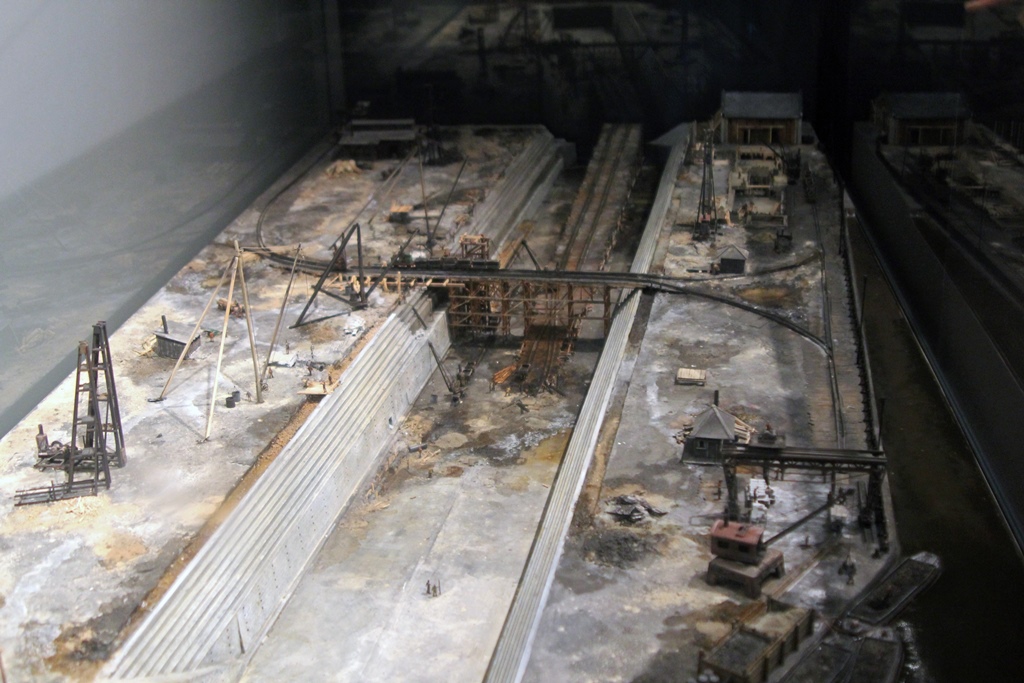
Model of Slipway
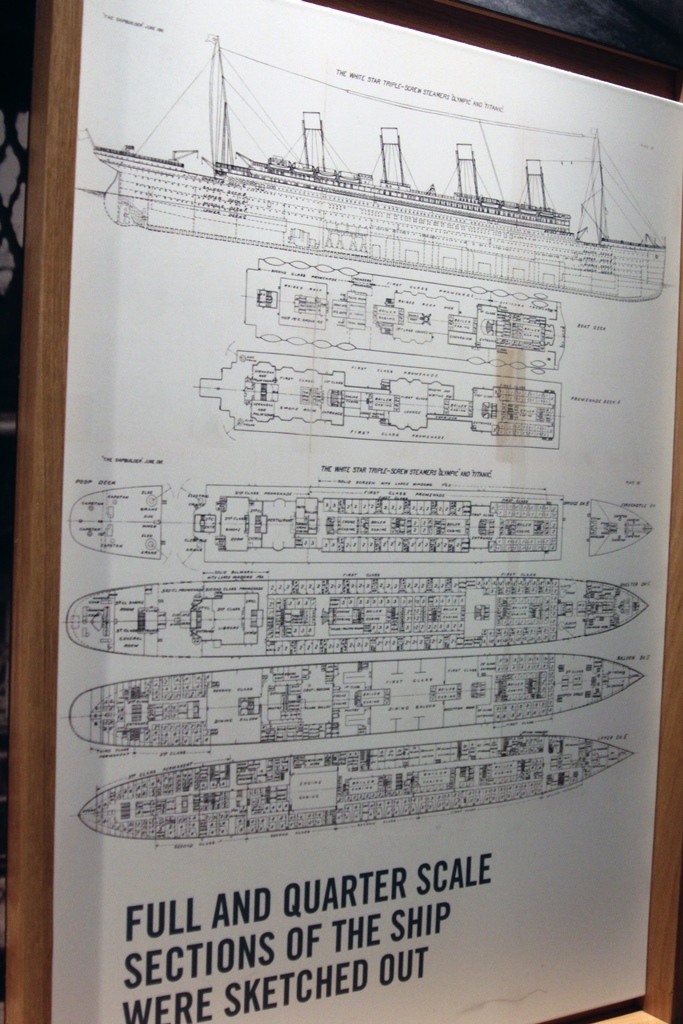
Layout for Olympic and Titanic
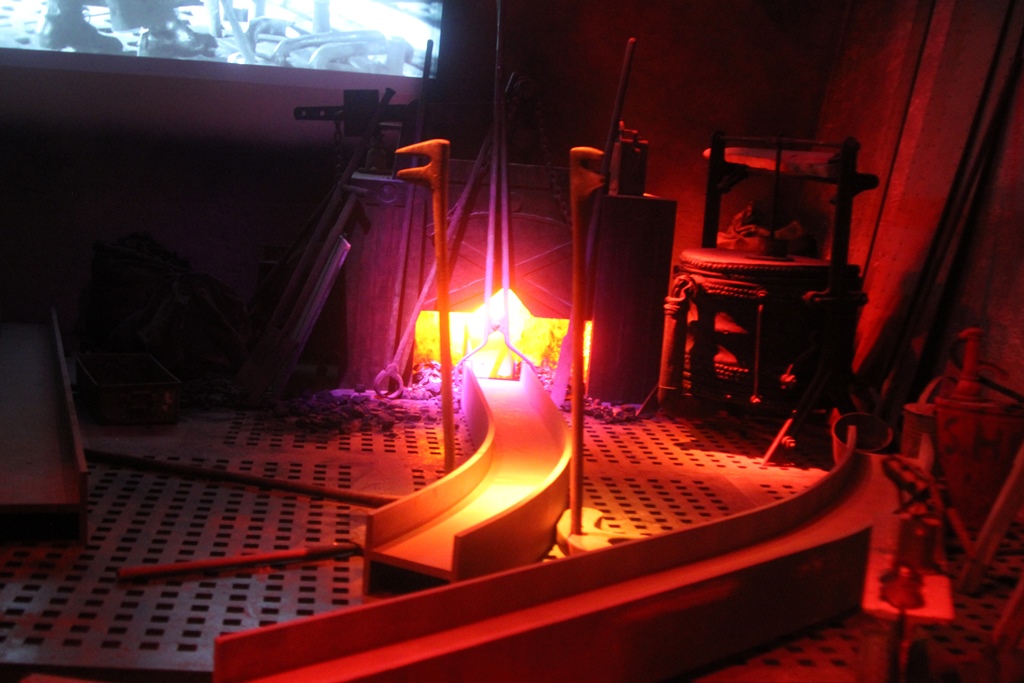
Recreation of Furnace
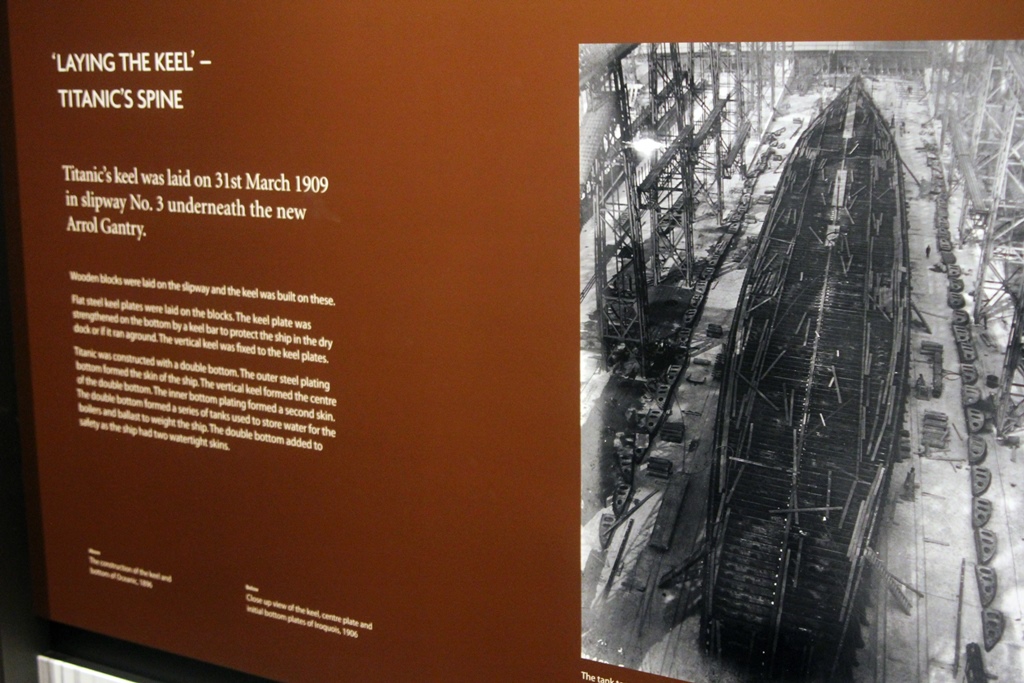
Photo of Ship Under Construction
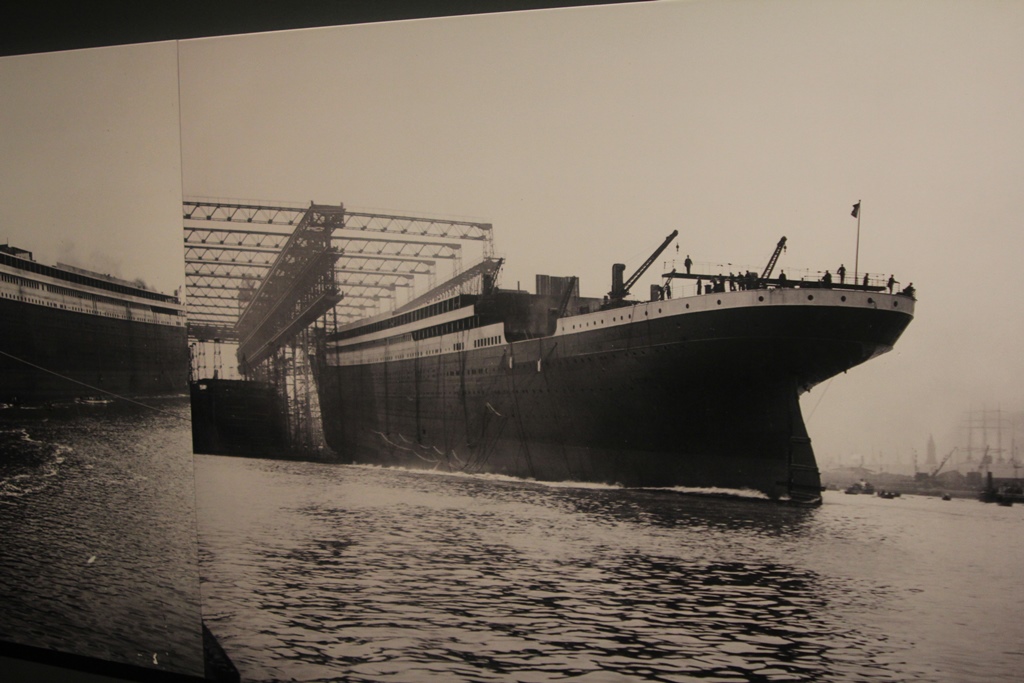
Belfast Launch Photo
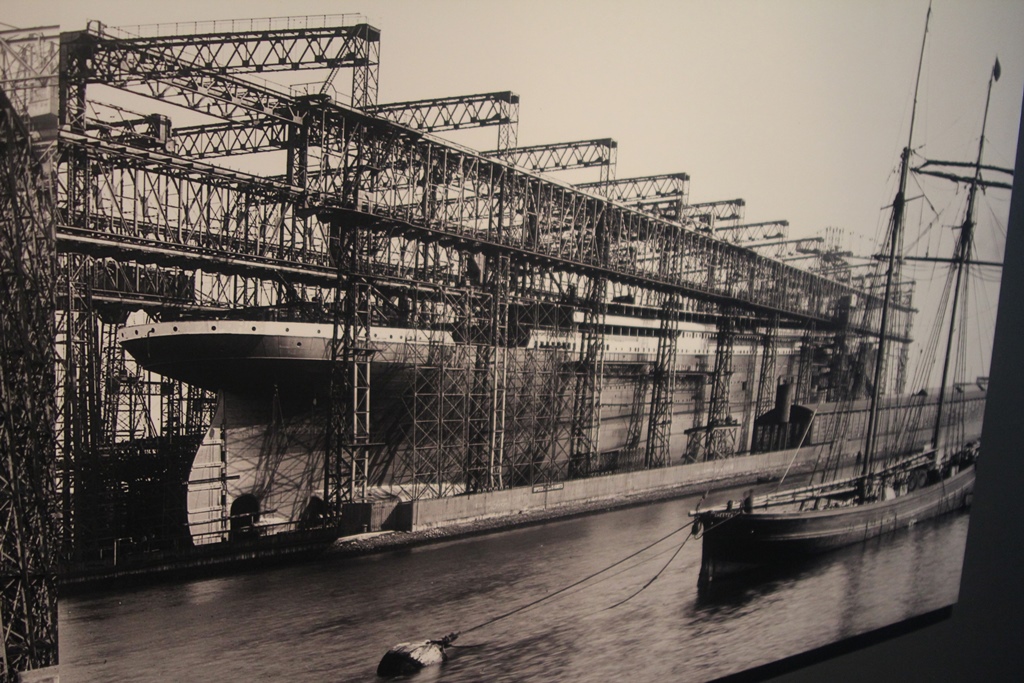
Titanic in Slipway
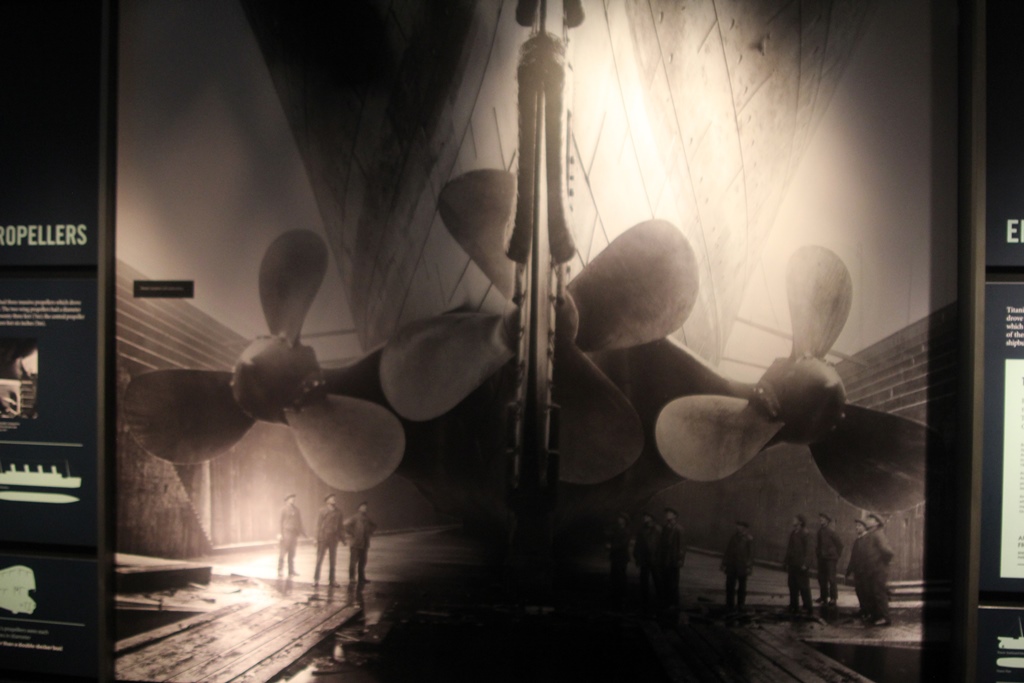
Titanic Propellers
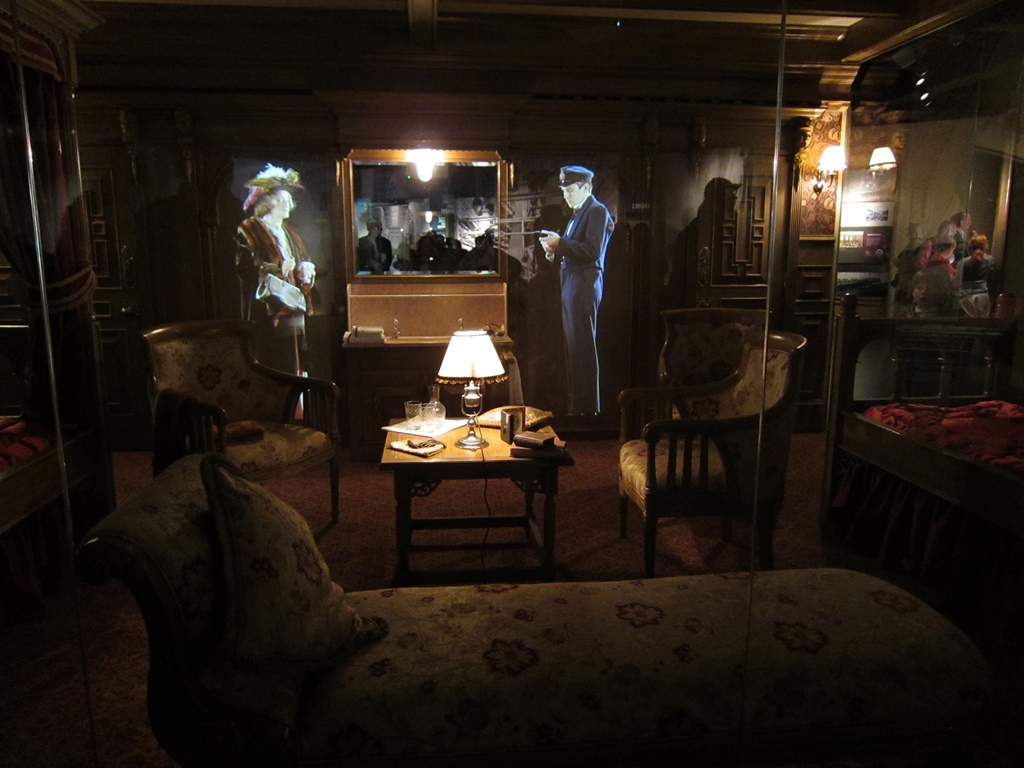
Reconstruction of Drawing Room
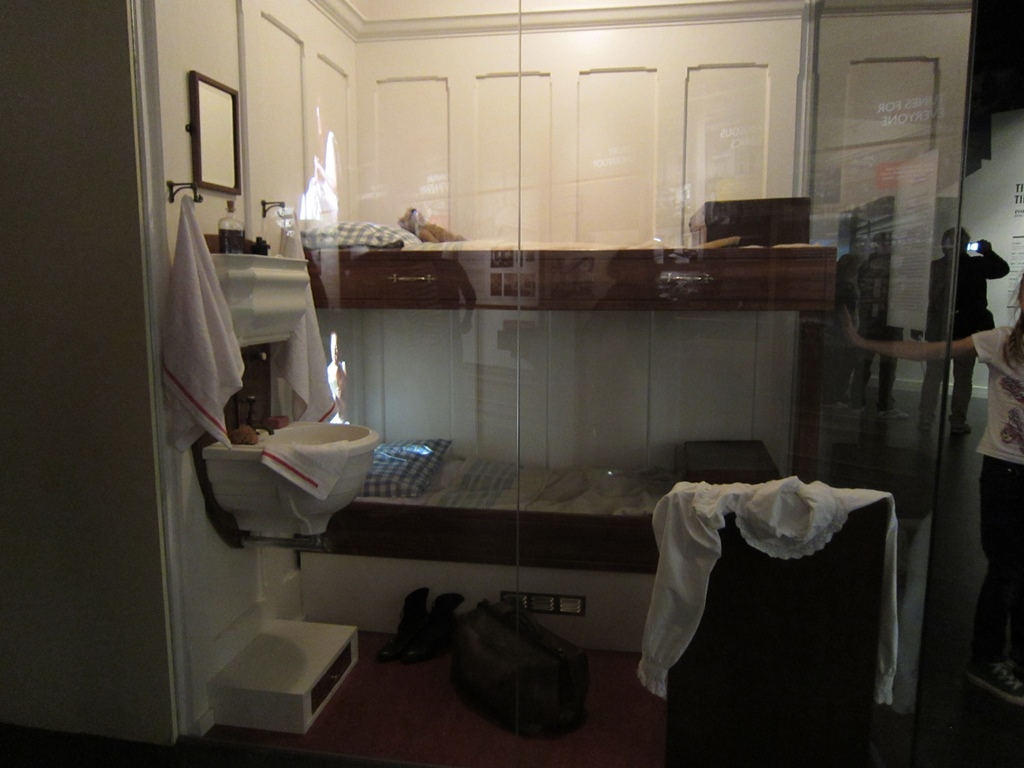
Second Class Cabin
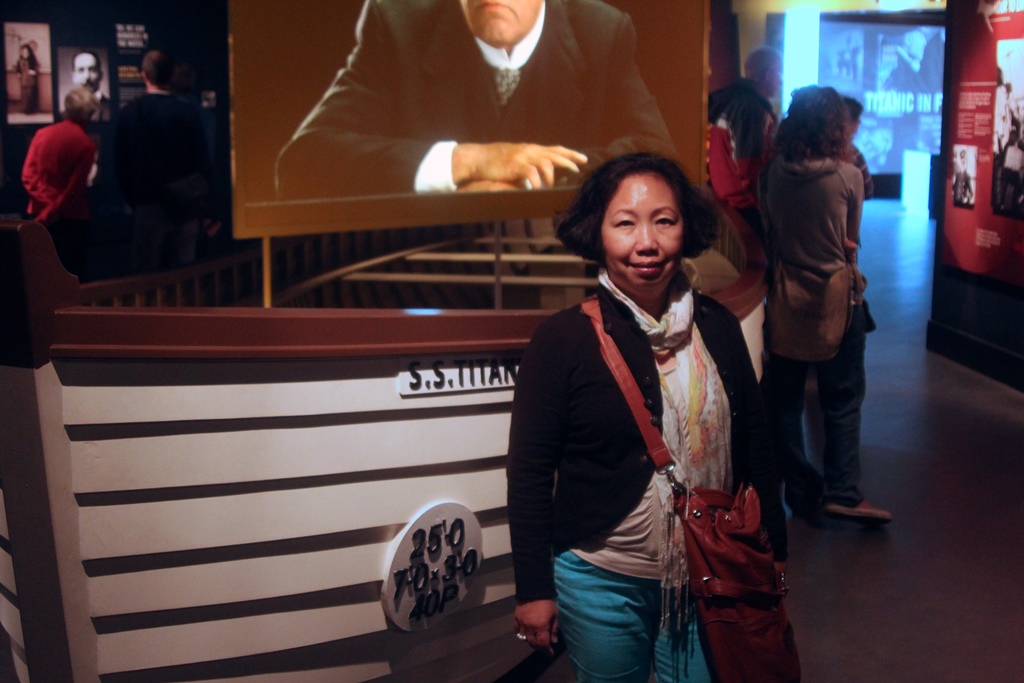
Nella and Replica Lifeboat
At one point there is a raised view of the twin slipways and of the harbour
beyond. During most of our visit, it was raining both cats and dogs outside,
so we didn't do any further exterior exploration.
Slipway Area in Rain
Across from the museum's entrance we could see a boat labelled the S.S. Nomadic
in a drydock area. This was one of the Titanic’s tender vessels. The route
followed by the Titanic during its maiden voyage began at Southampton in
England on April 10, 1912. From Southampton the ship travelled to Cherbourg in
France, where it arrived four hours later, dropping off some passengers and
collecting others. Next the ship travelled to Cork Harbour in southern Ireland,
where it arrived the next morning and another passenger exchange took place.
From Ireland the ship headed for New York City, with the plan being to arrive there
on April 17 (plans decisively changed by an iceberg on the 14th). This was a
common itinerary for cruise ships, and it was in fact successfully completed a year
earlier by the Olympic on its less eventful maiden voyage. With the
Olympic-class ships being so large, not all ports had docking facilities
that could handle them. This was the case in both Cherbourg and Cork harbour. In
such ports smaller tender vessels were used to ferry passengers between shore and
the large steamships, which were anchored. The S.S. Nomadic was one of two
tenders used during the Titanic’s stop in Cherbourg, at which time the
tenders accomplished their task in just 90 minutes. Today, the Nomadic is
the only remaining White Star vessel still in existence. The White Star line
merged with its chief rival, the Cunard line, in 1934, with the White Star name
being dropped entirely in 1950.
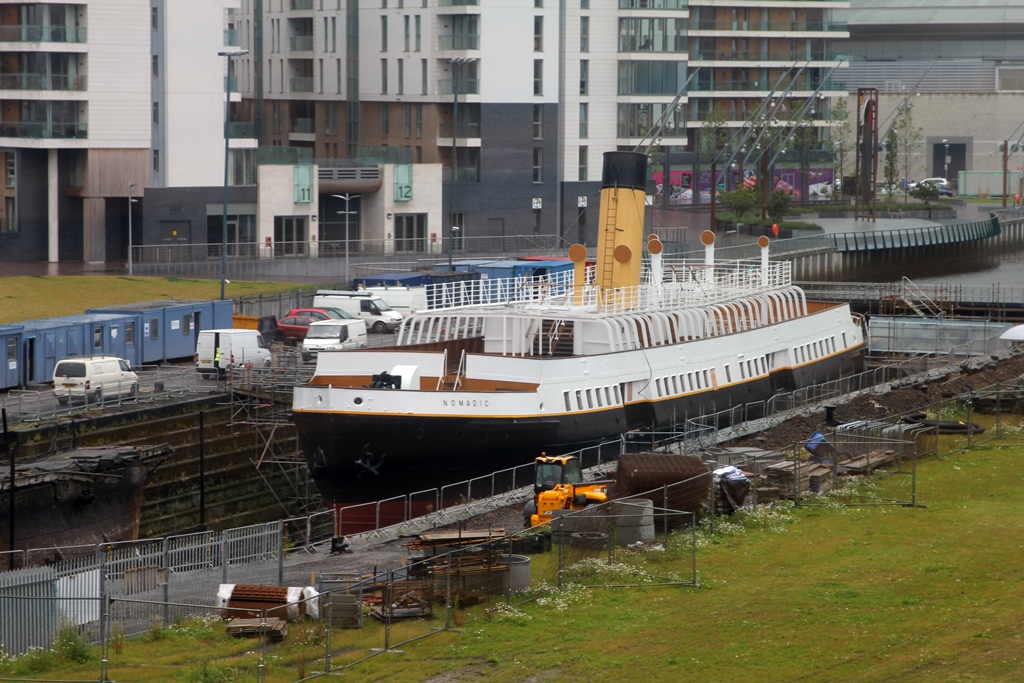
S.S. Nomadic
With the rain letting up, we exited the museum, posed for a few pictures,
and headed back to the bus stop.
Bob Near Museum Entrance
We rested a bit at the hotel and then walked southward in search of dinner,
which we found at a Thai place on Dublin Road.
Thai Village Restaurant
We returned to the hotel and made an early night of it. It had been a full
day, and we had an early appointment the next morning – we were going to meet
up with a tour bus that would take us up to Northern Ireland's Antrim coast.





